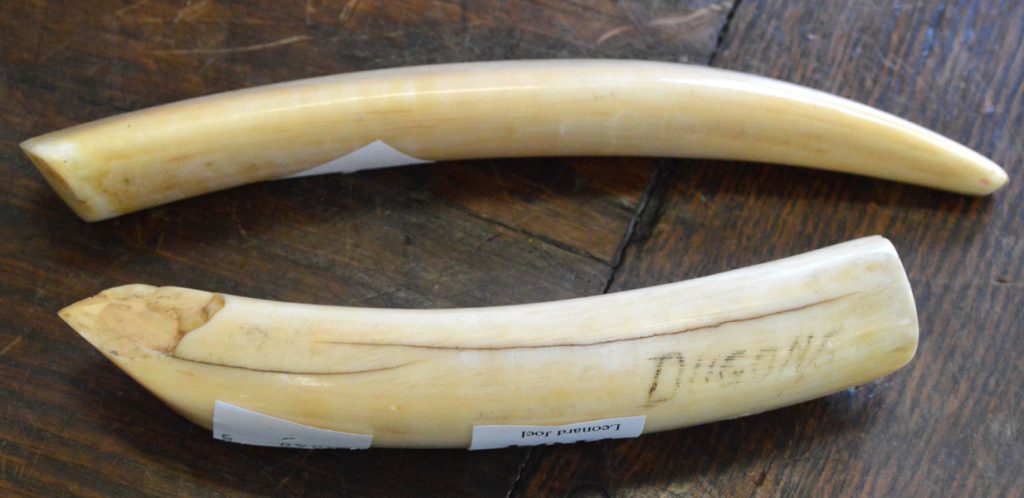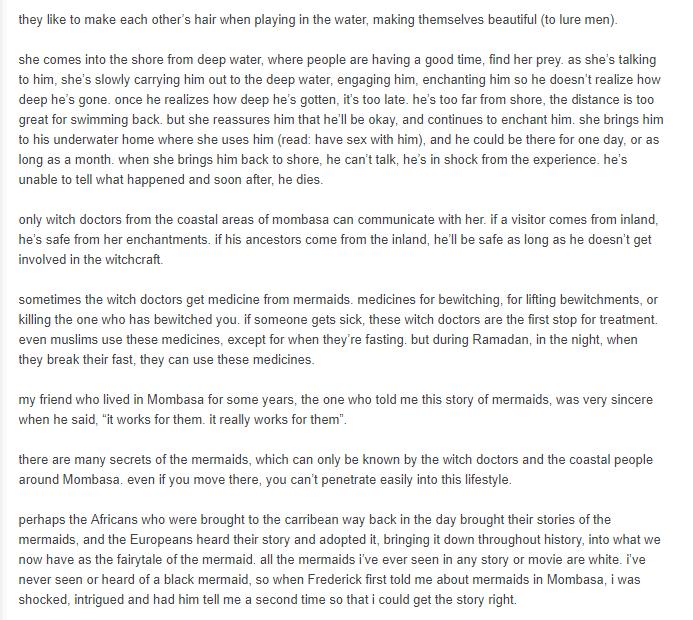Mermaid Monday: Mermaids at Mombasa September 4, 2017
Author: Beach Combing | in : Modern , trackbackAfrican mermaids from 1825.
It is one of those bulletins from ‘foreign climes’ that provided British newspapers with so much of their copy in the 1700s and through much of the nineteenth century. Note how the mermaids are just slipped in, like the silly item at the end of the news.
Aug. 1. The Espiegle, 18, Captain Wray, arrived here on the 24th ult from Zanzibar and our new settlement at Mombass (28 days from the latter place). Lieut. Emery, R. N. and the establishment at Mombass were in good health. Mr George Phillips, Collector of the Customs, had died of fever which he caught at Pemba, an island near Mombass. It is discovered that, besides the Hippopotamus, there are Mermaids on that coast, several of which have been taken: their teeth is the best of ivory, and are used for making handles of sword. (1825)
Mombassa is in modern day Kenya, so we are on the east coast of Africa: Zanzibar is in modern Tanzania. As to what ivory-toothed mermaids live on the east African coast, Beach happily throws the question open to his readers and to the net more generally: drbeachcombing AT yahoo DOT com. Sperm whales have large ivory teeth, but don’t normally comb their hair. Dugongs, resident on the Kenyan coast, are a more credible candidate but don’t have large ivory teeth. They do though have small tusks that would work as sword handles (see image at head of post). Perhaps that is the mystery solved.
Note that there is also folklore about Kenyan mermaids. Here is a short example: screen saved, just in case the site disappears.
African mermaid folklore seems an interesting subject. Beach hopes to return to it.
29 Sep 2017: Bruce writes ‘This is very interesting as it involves only the people who live on the offshore islands where the ports are and not the immediate interior. There is a very practical reason these trading ports weren’t set up on the mainland, the malaria of the East African mainland was lethal to most outsiders, thus the trading ports were built on offshore islands with a freshwater source for safety. The East African mermaid tales are very similar to ones in parts of the Malay archipelago. As the common banana arrives on the same coast at roughly 2200 b.p., an island S.E. Asia/ Papua New Guinea originating cultivar that is propagated only via clone only, and becomes widespread on the African continent within a few centuries after people from that region seem to be arriving early and often on the East African coast. They also brought their outrigger canoe technology with them along with a type of xylophone both of which are still in use there, the outrigger making it up to the Great Lakes region well before outside incursions there via the “Hey, that’s not bad idea” grapevine. The Malay’s got some things early from East Africa in antiquity that weren’t trade goods. They brought home elephantiasis and the deadly African malaria strain very early, around the dawn of the common era, if my brain isn’t failing me. (No guarantees on my brain.) My guess is the reason the people of the interior had nothing to fear from the mermaids is that it wasn’t part of their cultural baggage or lifestyle? In the melange of cultures out on the islands where not only traders from throughout the Indian Ocean trade zone were setting up shop, but intermarrying with locals in what was soon to become the Swahili culture zone, outwardly focused and based on the coastal islands where outside traders could come and go safely, and they could venture forth in to the same trading system. If you came from the offshore islands, you were part of “those people” and at the mercy of that belief system. If you came from the mainland, that stuff didn’t apply to you. Let’s face it, the Devil can’t get you if you don’t believe in him. The same with mermaids.’




